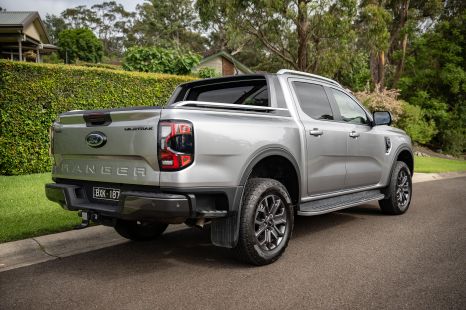

Max Davies
Top five 4×4 utes of 2024
9 Months Ago
The Isuzu D-Max is the Japanese automaker's top-selling vehicle and is one of the top-selling utes overall. It's available in single-cab, extra-cab and dual-cab body styles in either 4x2 or 4x4.
Depending on the variant, the D-Max is available as either a cab-chassis or pickup with a tub bed.
The 2024 Isuzu D-Max is on sale now, with a wider model range and some cosmetic tweaks inside and out. Pricing is up by $500 and $3000, depending on the variant. The range now opens at $32,700 before on-roads or $32,490 drive-away for the SX Single Cab Chassis 4×2 1.9-litre manual, and extends to $70,500 before on-roads or $67,990 drive-away for the X-Terrain.
For 2024 a total of 25 D-Max variants are now offered. Two manual-equipped variants have been axed, including the SX Space Cab Chassis 4×4 3.0L and the LS-U Crew Cab Ute 4×4 3.0L.
The X-Rider, which was added as a limited-edition variant last year, has now been made a permanent member of the range. It’s available exclusively with the 3.0-litre four-cylinder turbo-diesel, six-speed automatic and four-wheel drive, and is priced from $59,500 before on-roads.
Quickly see how this car stacks up against its competition. Select any benchmark to see more details.
Where expert car reviews meet expert car buying – CarExpert gives you trusted advice, personalised service and real savings on your next new car.
| Configuration | Price From* |
|---|---|
| 3.0L, 6-speed auto, Double Cab Utility, Diesel, 4x4 | $58,000 |
| 3.0L, 6-speed auto, Double Cab Utility, Diesel, 4x4 | $59,500 |
| Configuration | Price From* |
|---|---|
| 3.0L, 6-speed auto, Double Cab Utility, Diesel, 4x4 | $63,500 |
| 3.0L, 6-speed auto, Double Cab Utility, Diesel, 4x4 | $65,500 |
| Configuration | Price From* |
|---|---|
| 3.0L, 6-speed auto, Double Cab Utility, Diesel, 4x4 | $67,500 |
| 3.0L, 6-speed auto, Double Cab Utility, Diesel, 4x4 | $70,500 |
| Configuration | Price From* |
|---|---|
| 3.0L, 6-speed auto, Double Cab Utility, Diesel, 4x4 | $78,900 |
Where expert car reviews meet expert car buying – CarExpert gives you trusted advice, personalised service and real savings on your next new car.
See our comprehensive details for the Isuzu D-Max
The dual-cab Isuzu D-Max has a tub that measures 1570mm long, 1530mm wide and 490mm tall. There's 1122mm between the two rear wheel arches.
Where expert car reviews meet expert car buying – CarExpert gives you trusted advice, personalised service and real savings on your next new car.
CarExpert High Resolution Photos of the Isuzu D-Max
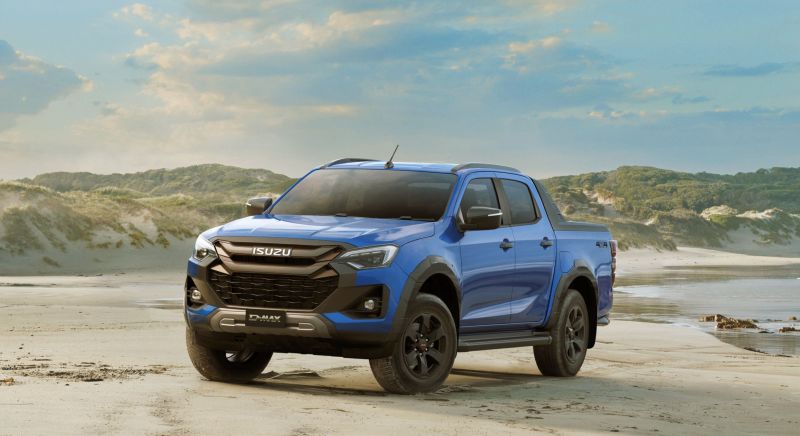
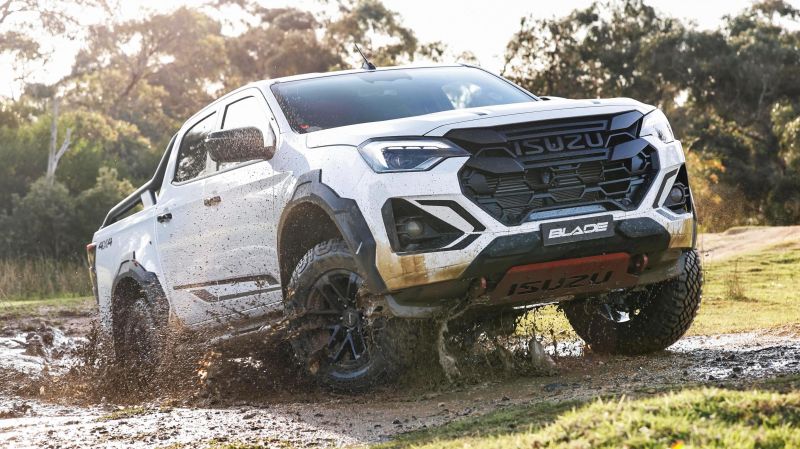
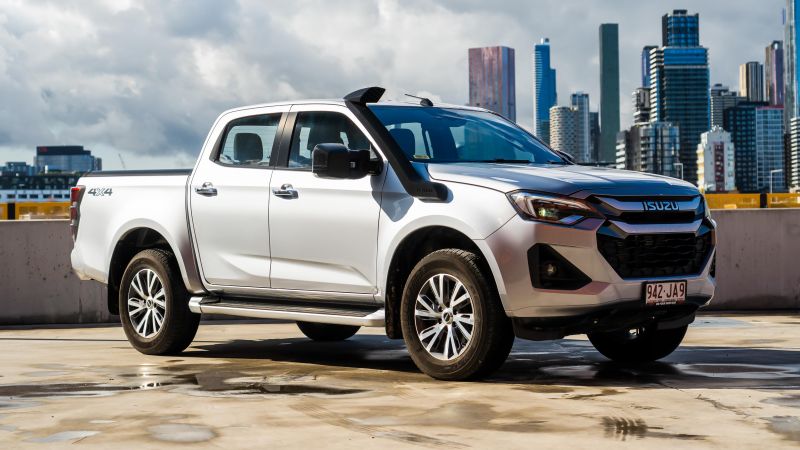
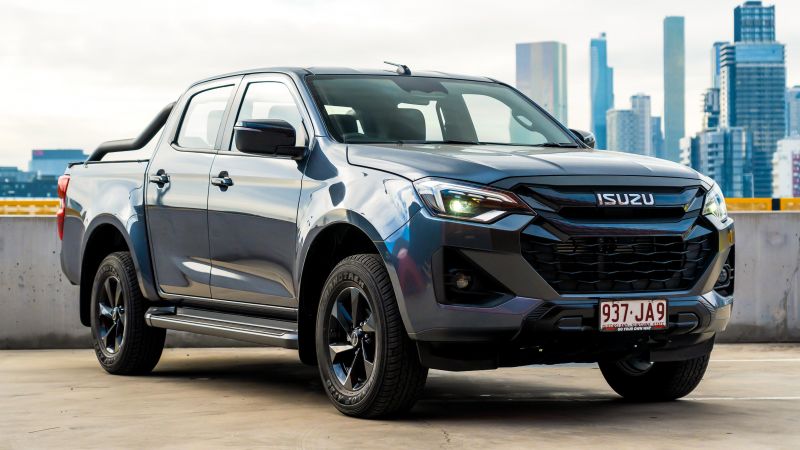
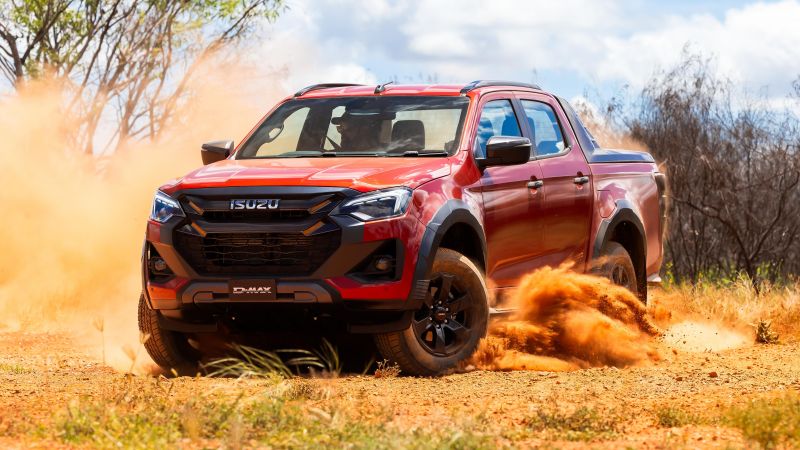
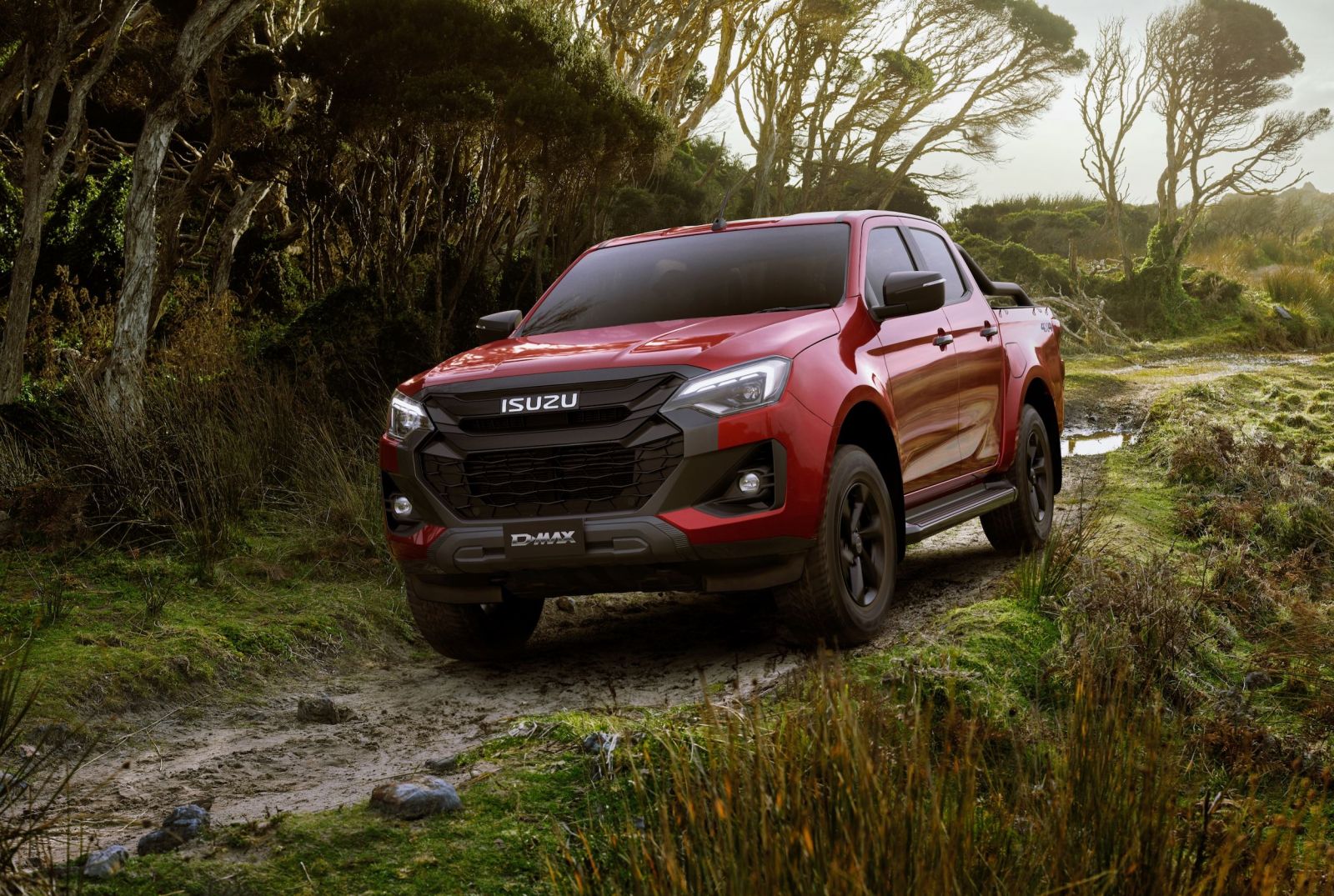
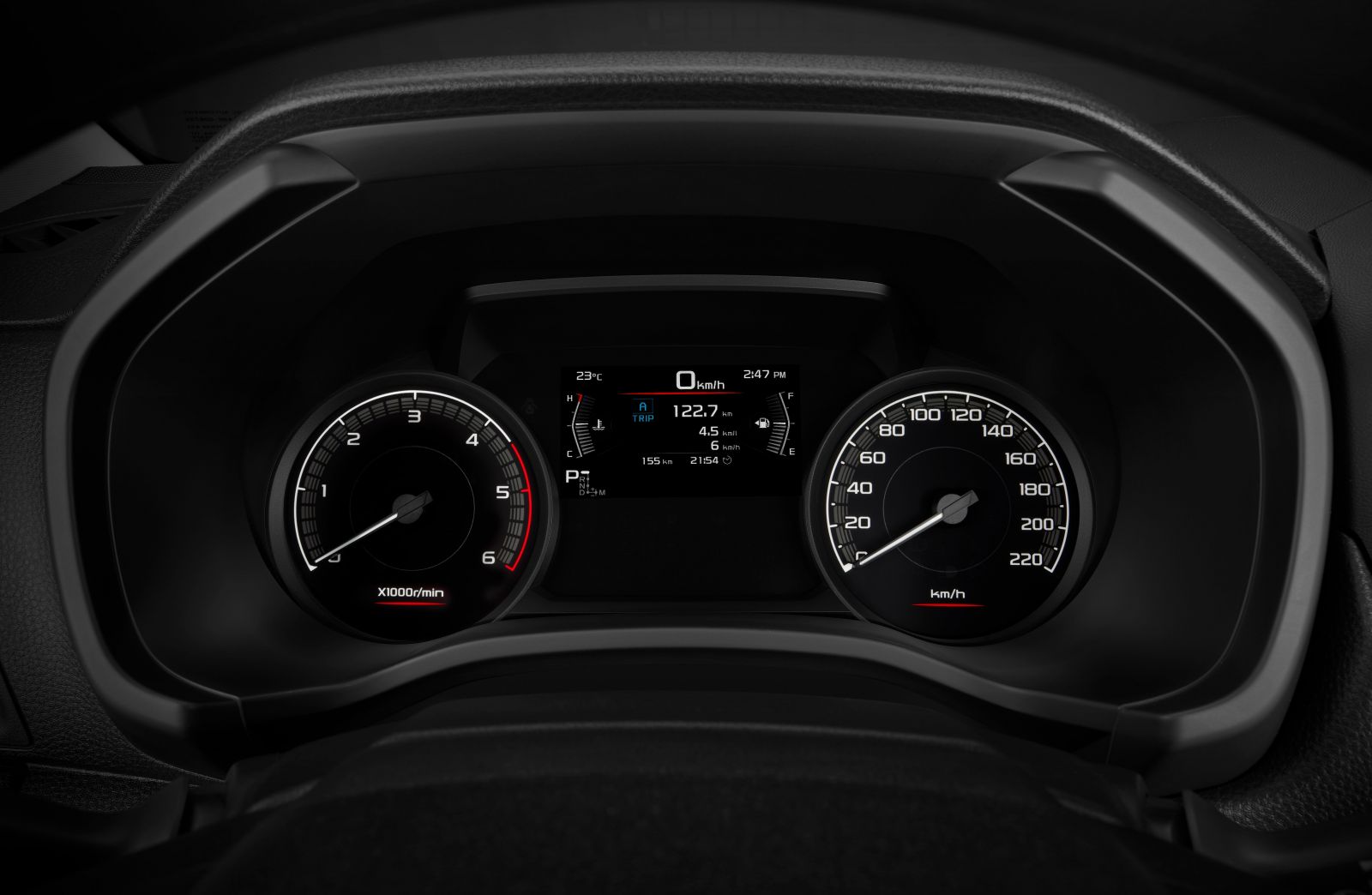
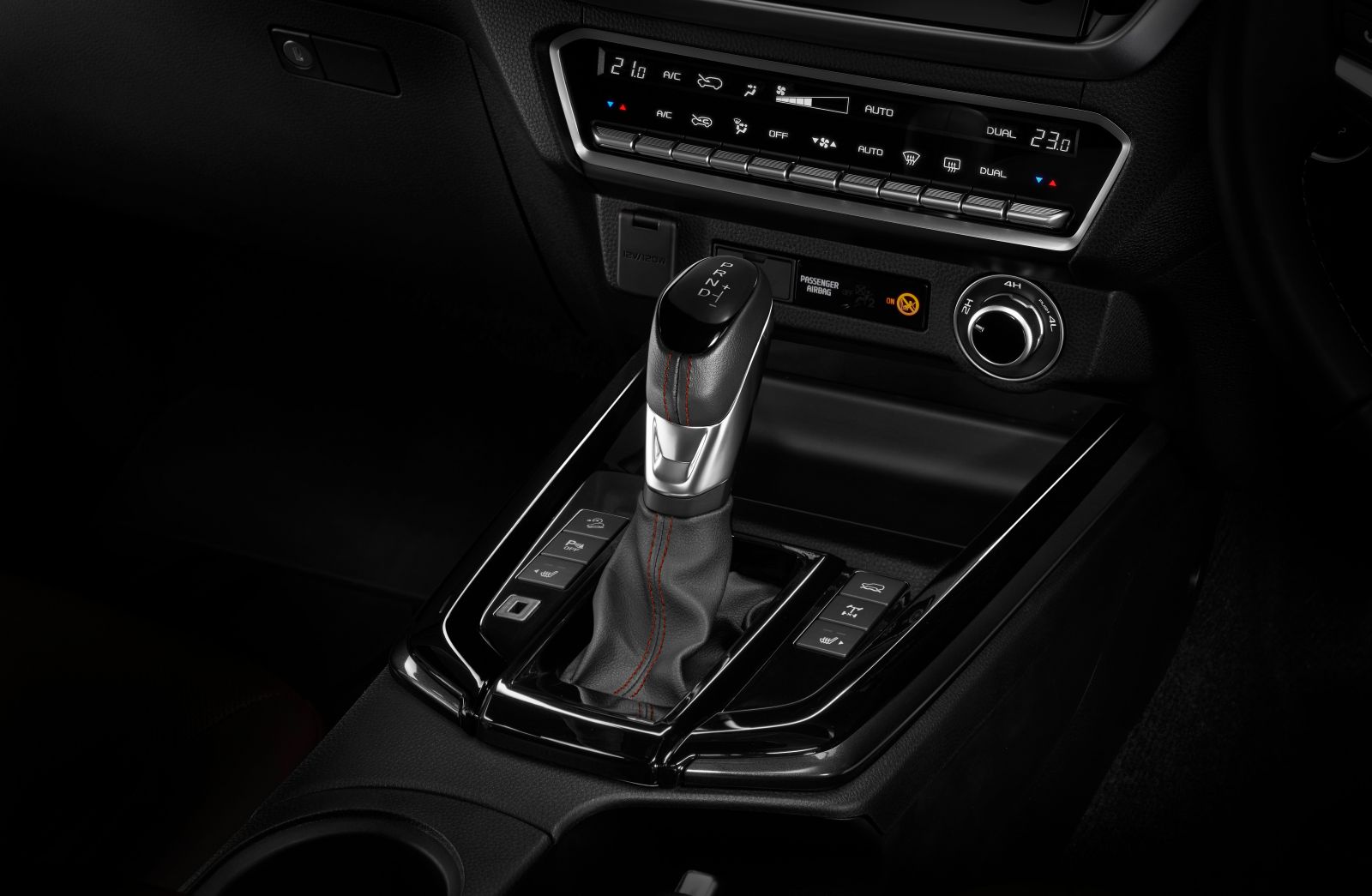
View 50 images
For 2024, the entire D-Max range has received a tweaked front fascia including new grille designs and air curtains nestled within the fog light area. The indicators have also been integrated into the headlight assembly.
Other exterior tweaks include different bonnet creases, revised tailgate bodywork, as well as combination LED tail lights on certain Ute variants.
Carried over from 2023, all versions of the D-Max get some aesthetic enhancements for the new model year, including a new version of the brand’s signature horizontal bar grille.
The design has been “moulded to meet the swooped hard creases atop the bonnet and chiselled front bar fascia”, and is finished in two-tone black on the SX, two-tone black and grey on the LS-M, two-tone grey and chrome on the LS-U and LS-U+, and dark grey on the flagship X-Terrain.
Models fitted with LED fog lights get new surrounds in dark grey metallic, while the LED tail lights also receive dark grey metallic accents – replacing the outgoing model’s chrome trim.
New alloy wheel designs also feature on D-Max LS-M and above, ranging from 17 to 18 inches. LS-U, LS-U+ and X-Terrain models also pick up standard tyre pressure monitoring for 2023.
On the entry-level D-Max SX you get 17-inch steel wheels with black plastic door handles. The SX is available in either 4x2 or 4x2 with single cab-chassis, extra cab-chassis, or dual-cab-chassis or dual-cab ute options.
Stepping up the LS-M gains you 17-inch alloy wheels, body-coloured door handles, bi-LED headlights and LED daytime running lights. The LS-M is only available in dual-cab 4x4 variant with either cab-chassis or tub bed options.
The LS-U gets larger 18-inch alloy wheels with a factory tow bar receiver, tub liner on ute models, sides steps and LED rear lights. It also allows you to choose from more exterior paint colours.
The top-of-the-range X-Terrain is available with an exclusive orange exterior paint colour as well as 18-inch black-finish alloy wheels and unique exterior trim.
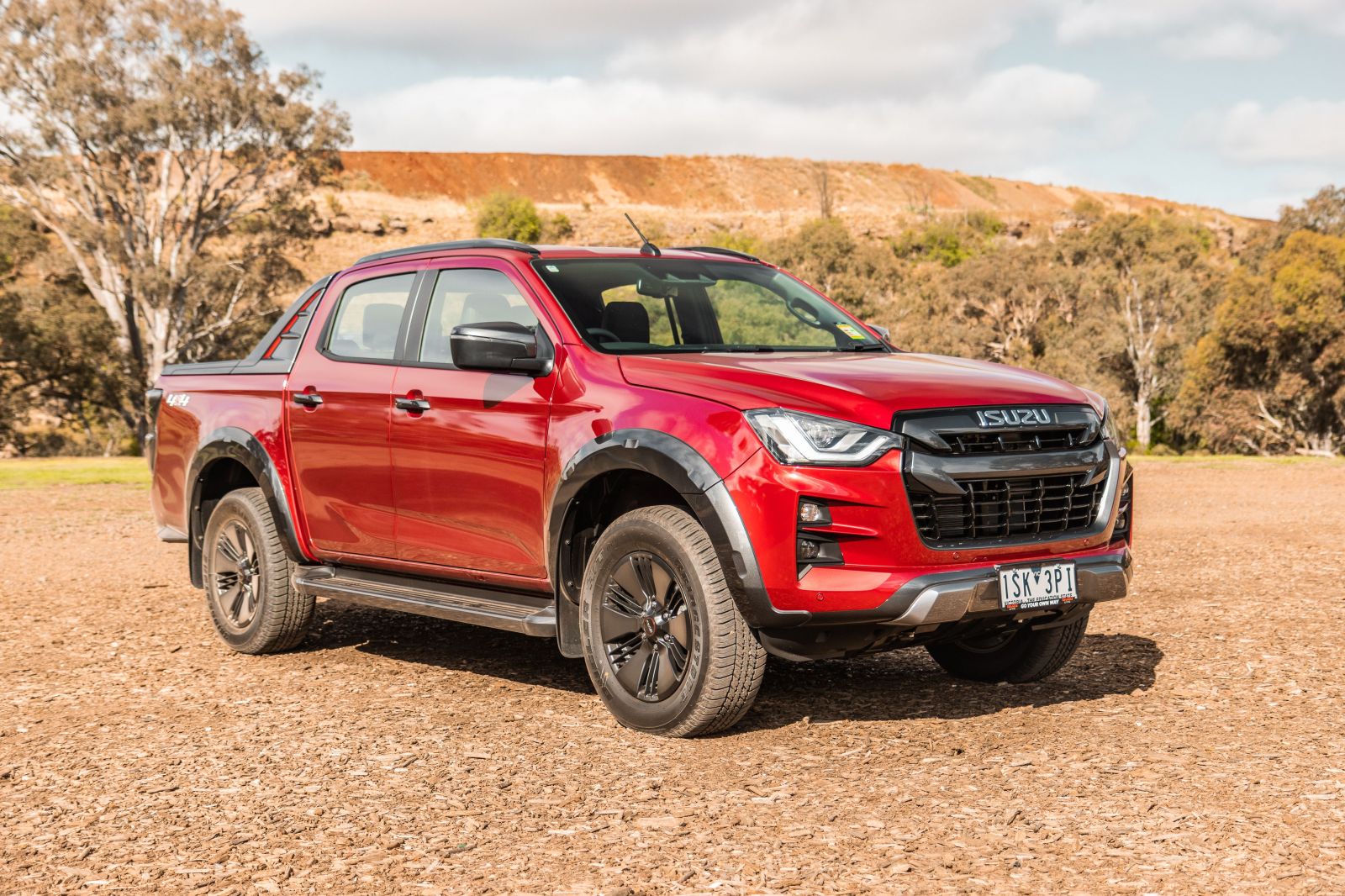
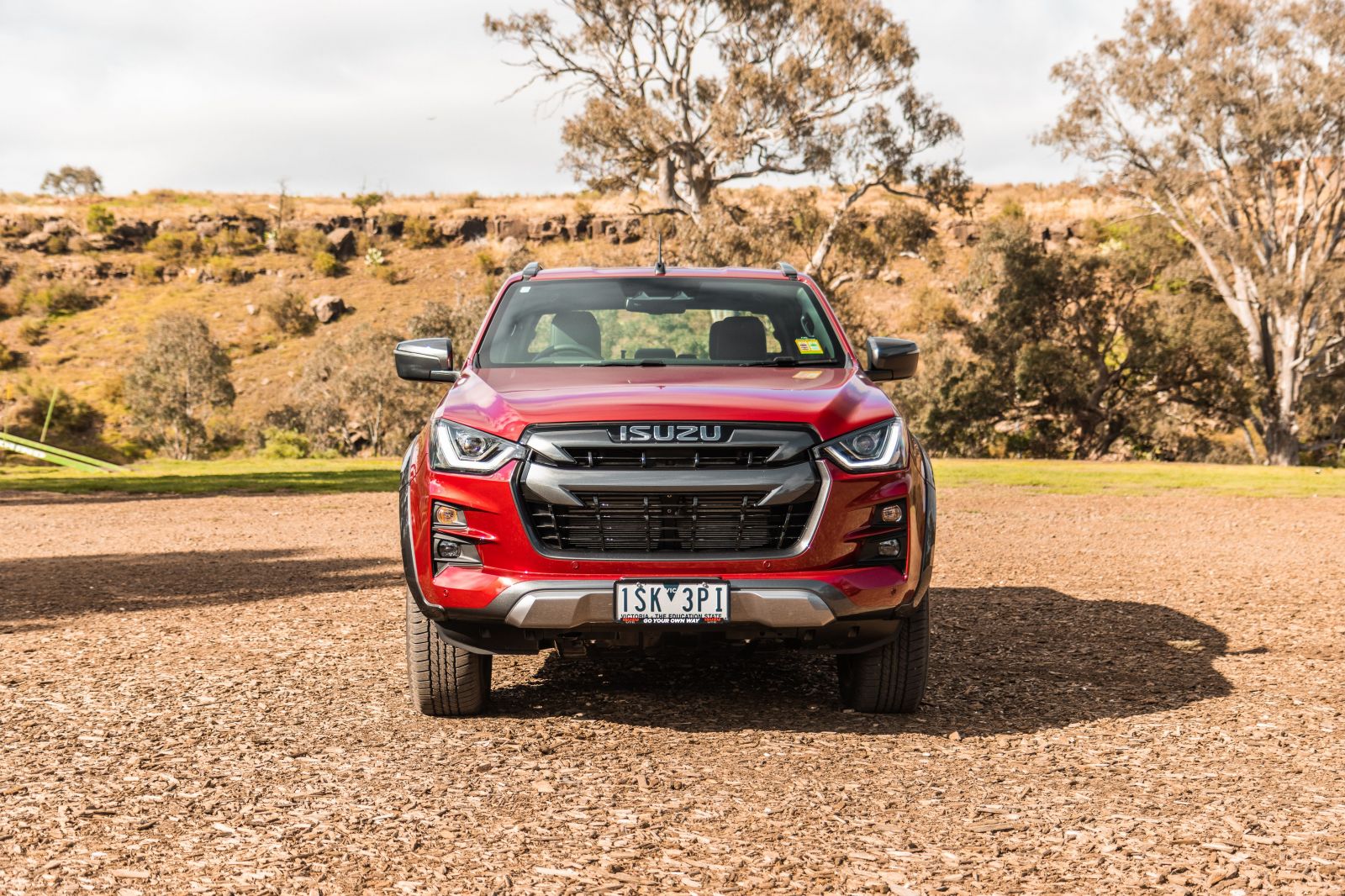
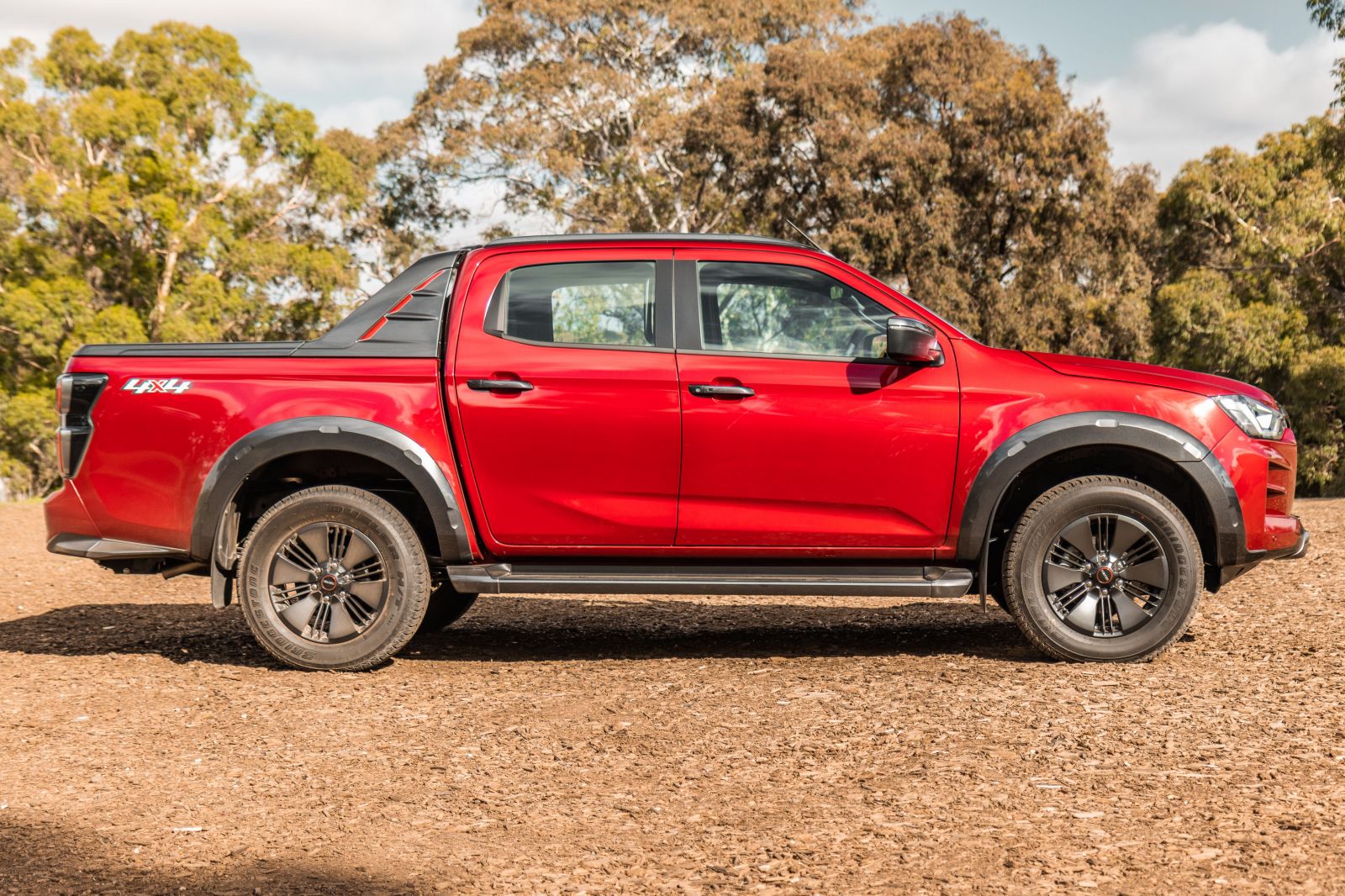
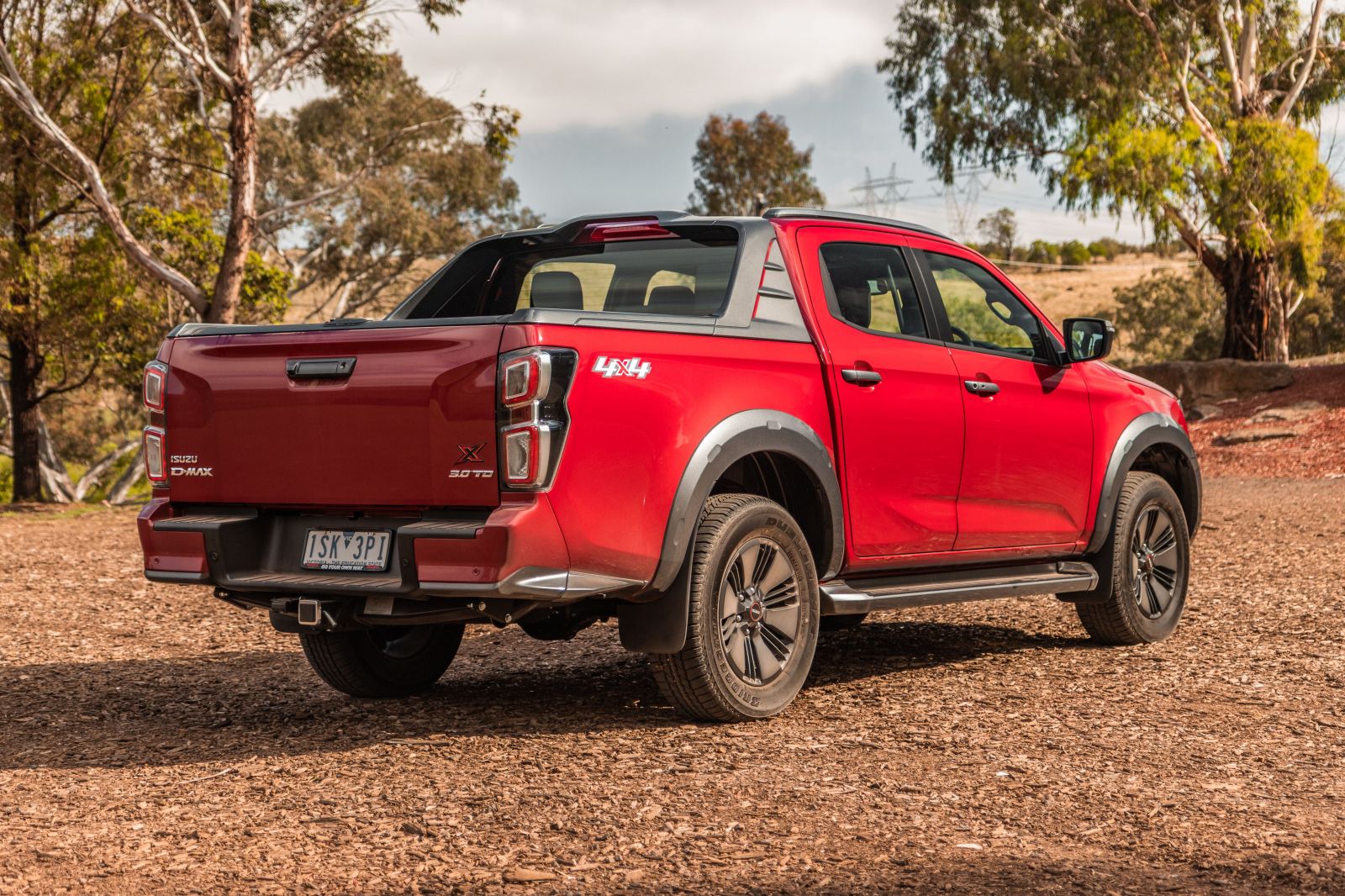
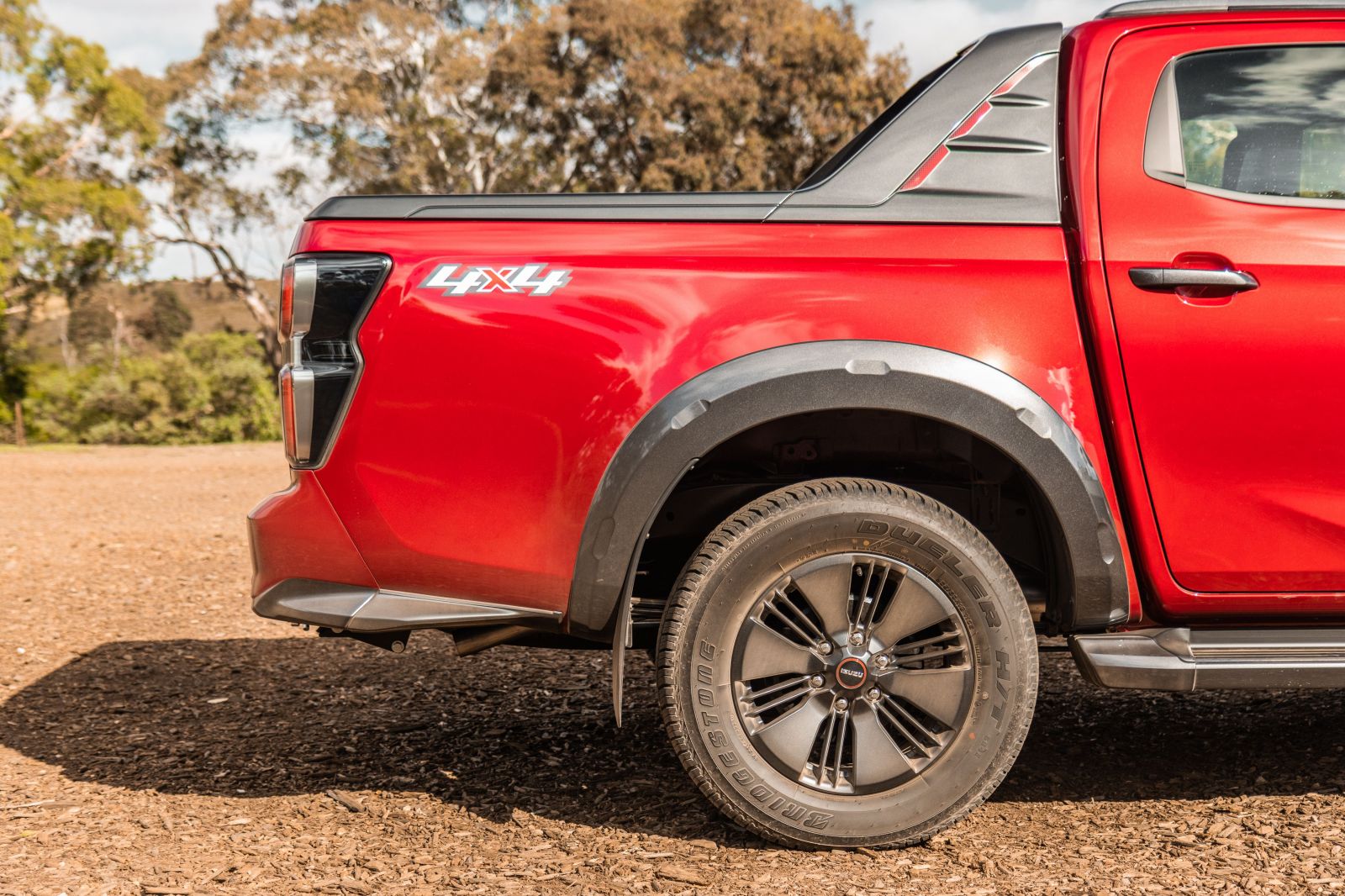
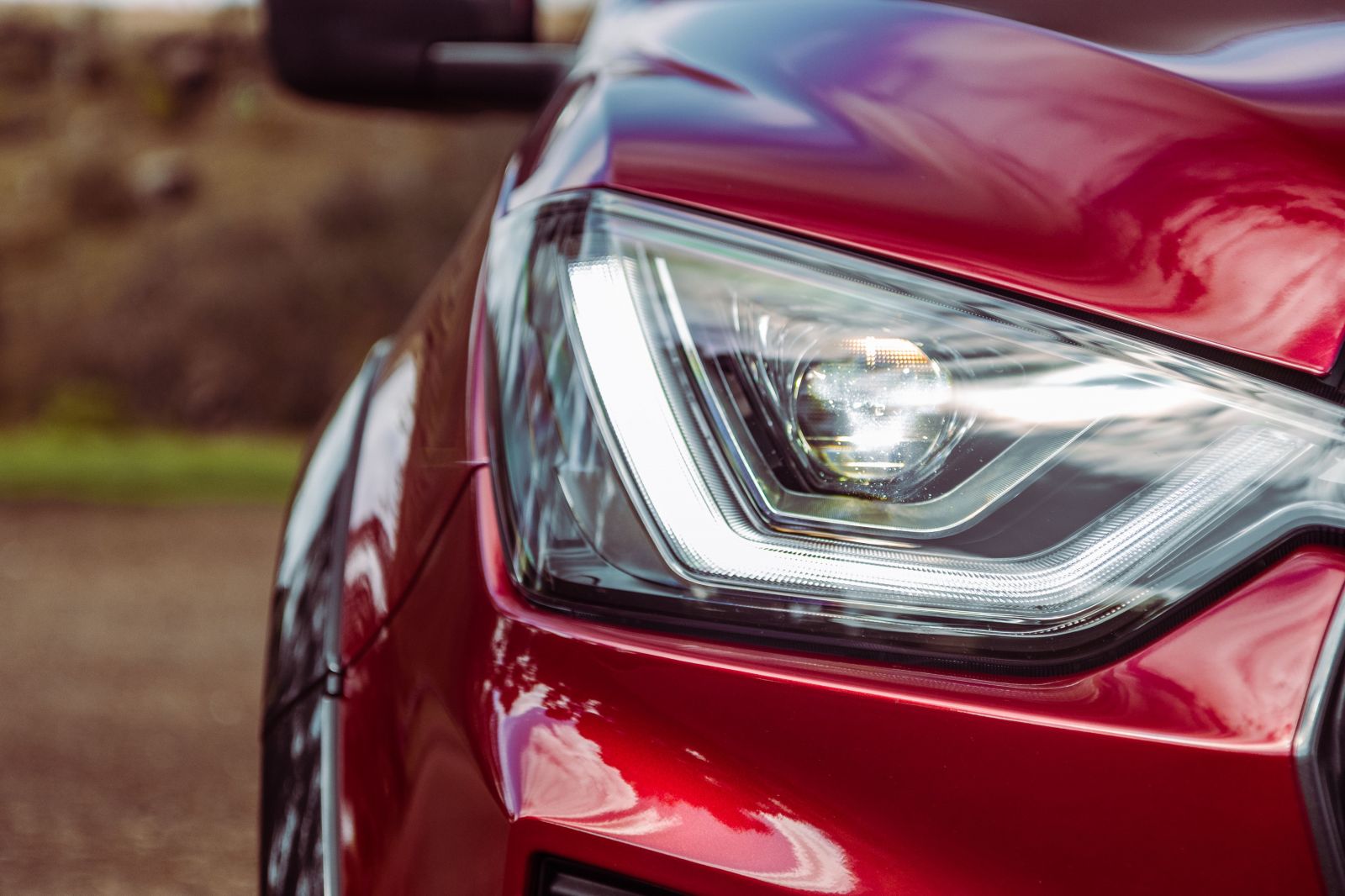
View 6 images
For 2024, the D-Max has received a revised instrument cluster setup. Entry-level models stick with a 4.2-inch multi-information display and dials that are claimed to have easier-to-read fonts and graphics.
LS-U, LS-U+ and X-Terrain variants get a larger 7.0-inch digital instrument cluster with smaller dials flanking it
All D-Max variants also receive a new touchscreen infotainment system that has new software with integrated off-road and ADAS (for certain variants) functions, as well as a pair of tuning and volume dials in place of the push buttons on the pre-facelift model.
SX, LS-M and X-Rider variants receive an 8.0-inch touchscreen, whereas LS-U, LS-U+ and X-Terrain variants receive a larger 9.0-inch touchscreen.
All systems sport USB-C connectivity, DAB+ digital radio, and wired and wireless Apple CarPlay and Android Auto. D-Max buyers previously required a cable to use Android Auto.
For 2023, the brand has introduced new upholsteries and trims depending on variant.
The LS-M and LS-U get new high-grade cloth, while the LS-U+ and X-Terrain get updated leather-accented upholstery. As before, the X-Terrain gets distinctive red top-stitching.
SX Crew Cab models (Cab Chassis and Ute) also receive an additional 2.1A USB charging port in the second row to match higher grades, which Isuzu says is in response to “more families turning to utes as default dual-purpose family vehicles”.
The D-Max’s interior is logically laid-out, no-nonsense and modern in appearance.
On lower-spec models there's a 7.0-inch screen surrounded by a thick bezel. At least you still get wired Android Auto plus, rare for this segment, wireless Apple CarPlay. There’s no factory satellite navigation, though.
From the LS-U and above, the D-Max receives a larger 9.0-inch touchscreen that's slightly bigger than most (HiLux and outgoing Ranger use 8.0-inch screens) and has helpful shortcut buttons running below to head straight to the home screen or the embedded navigation.
A colour 4.2-inch information display sits between the analogue dials of the instrument cluster and displays information on, among other things, fuel economy and the active safety systems.
While the dials are clear and legible, the information display is a bit cluttered. Fortunately, it boasts a digital speedometer, something you won’t find in a Triton.
On the X-Terrain, the steering wheel now has piano black inserts rather than silver plastic as before, and red stitching, but is otherwise unchanged. It’s trimmed in quality leather, moves forwards and backwards as well as up and down, and has easy-to-understand button shortcuts on it.
The entire range also benefits from a new steering wheel switch that’ll turn off all lane support systems if you hold it for two seconds.
The highlight of the interior are the front seats, which are cushy and comfortable yet supportive.
There’s plenty of storage up front, including a split-level glove compartment, neat pop-out cupholders on either end of the dash, a reasonably-sized centre console bin, a tray at the base of the centre stack large enough for a phone, and a dash-top tray with a lid that can also fit a phone.
Each door has a bottle holder that’ll fit a typical drink bottle, while stepping into the back you’ll find map pockets on the soft seatbacks plus a small, open cubby above the air vents. It sits next to a USB-A outlet.
Rear legroom, headroom and toe-room is par for the dual-cab ute class, with plenty of room for even taller occupants.
The second-row bench folds upwards at its base to reveal storage beneath the seat, while it can also be folded to access a shared top-tether anchor point for child seats. ISOFIX points are accessible for the two outboard seats.
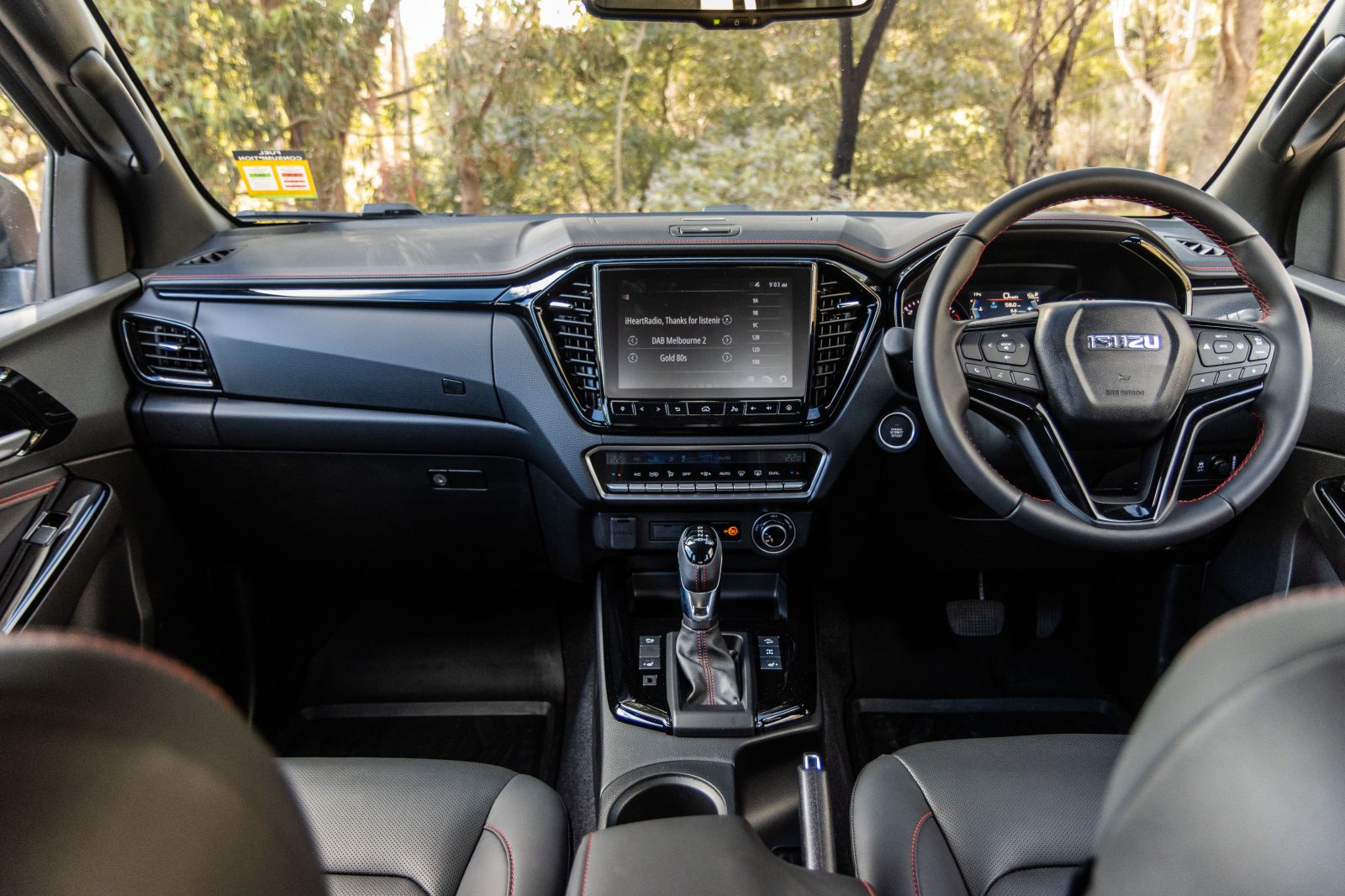
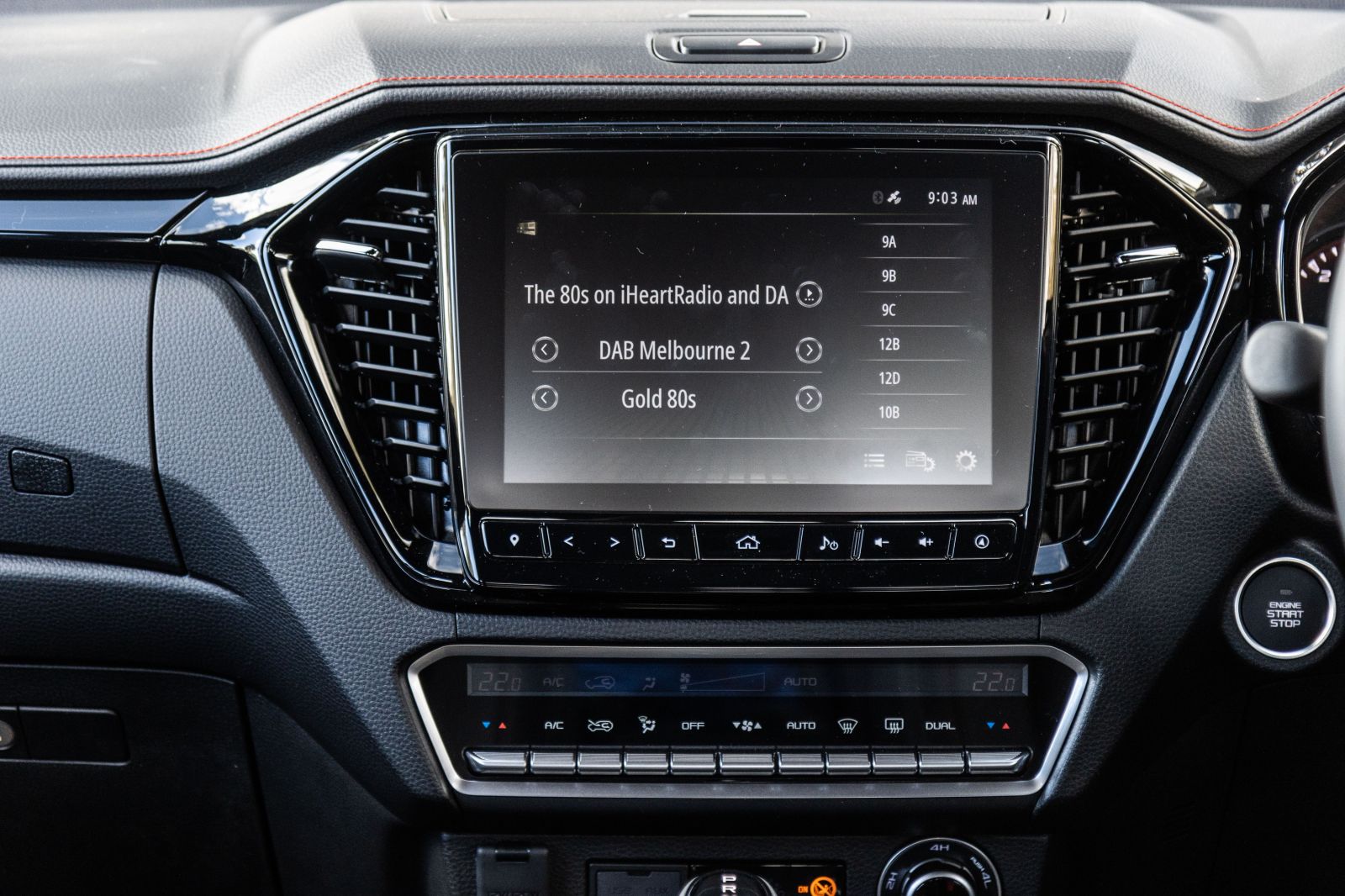
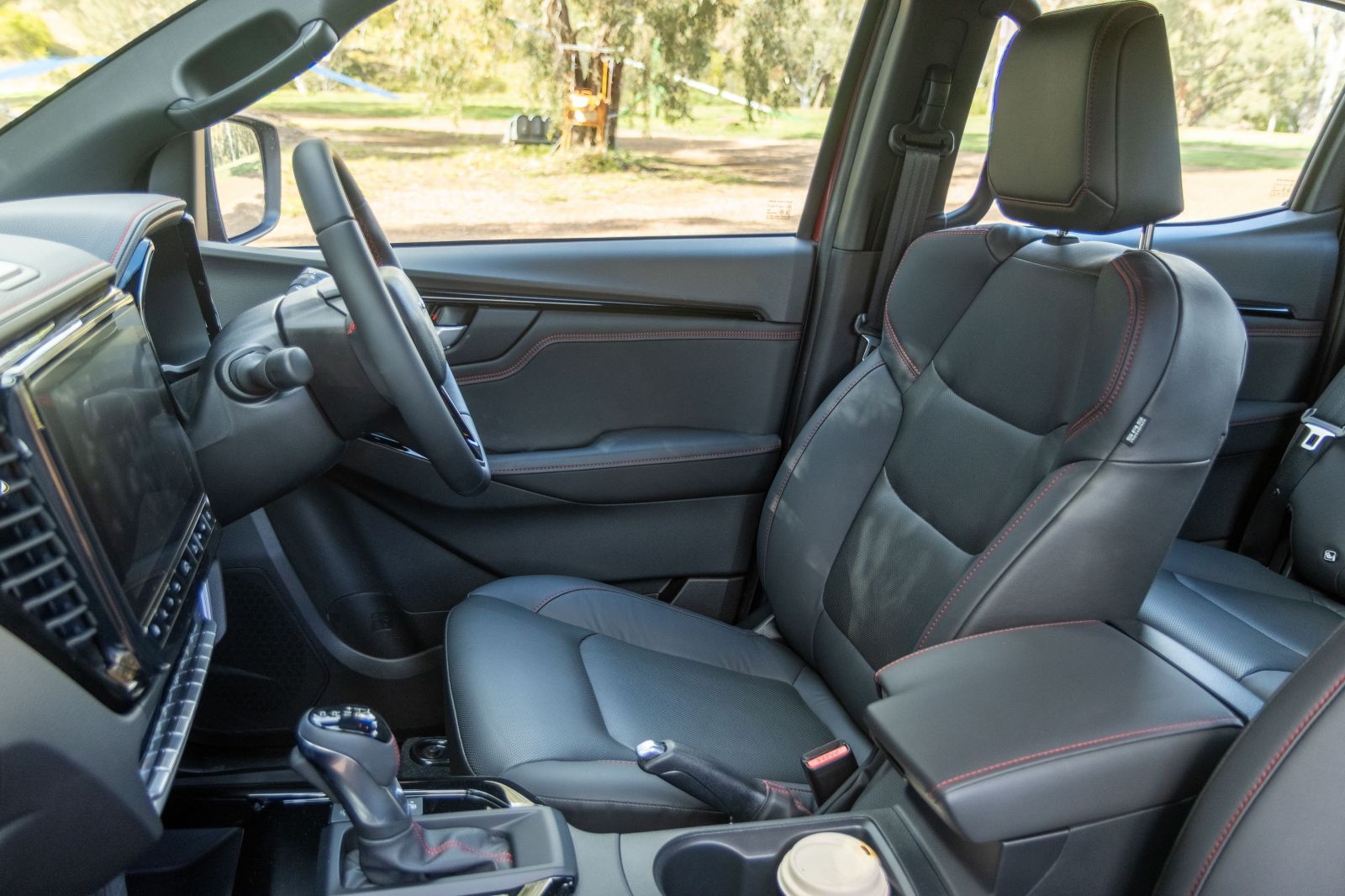
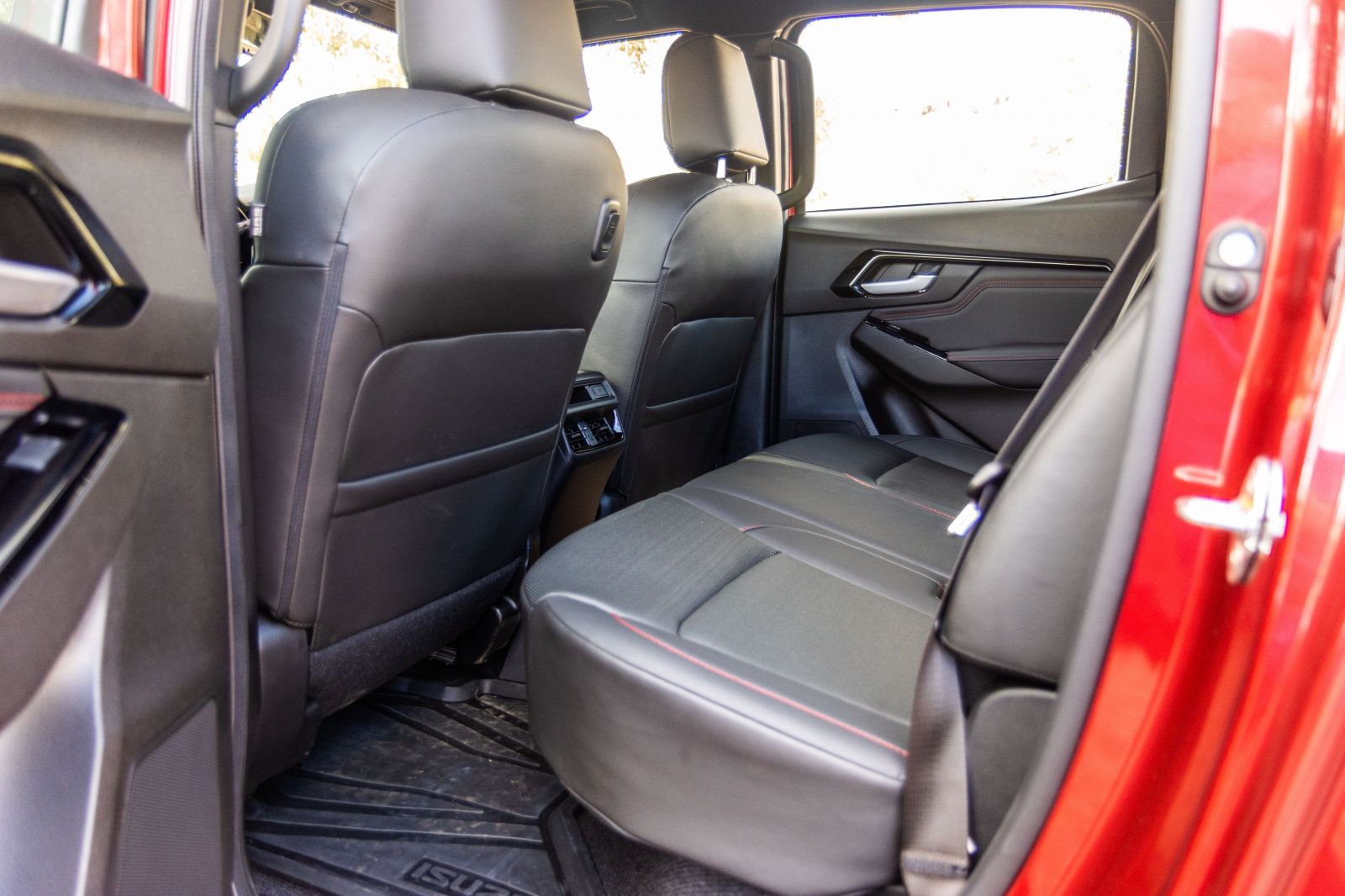
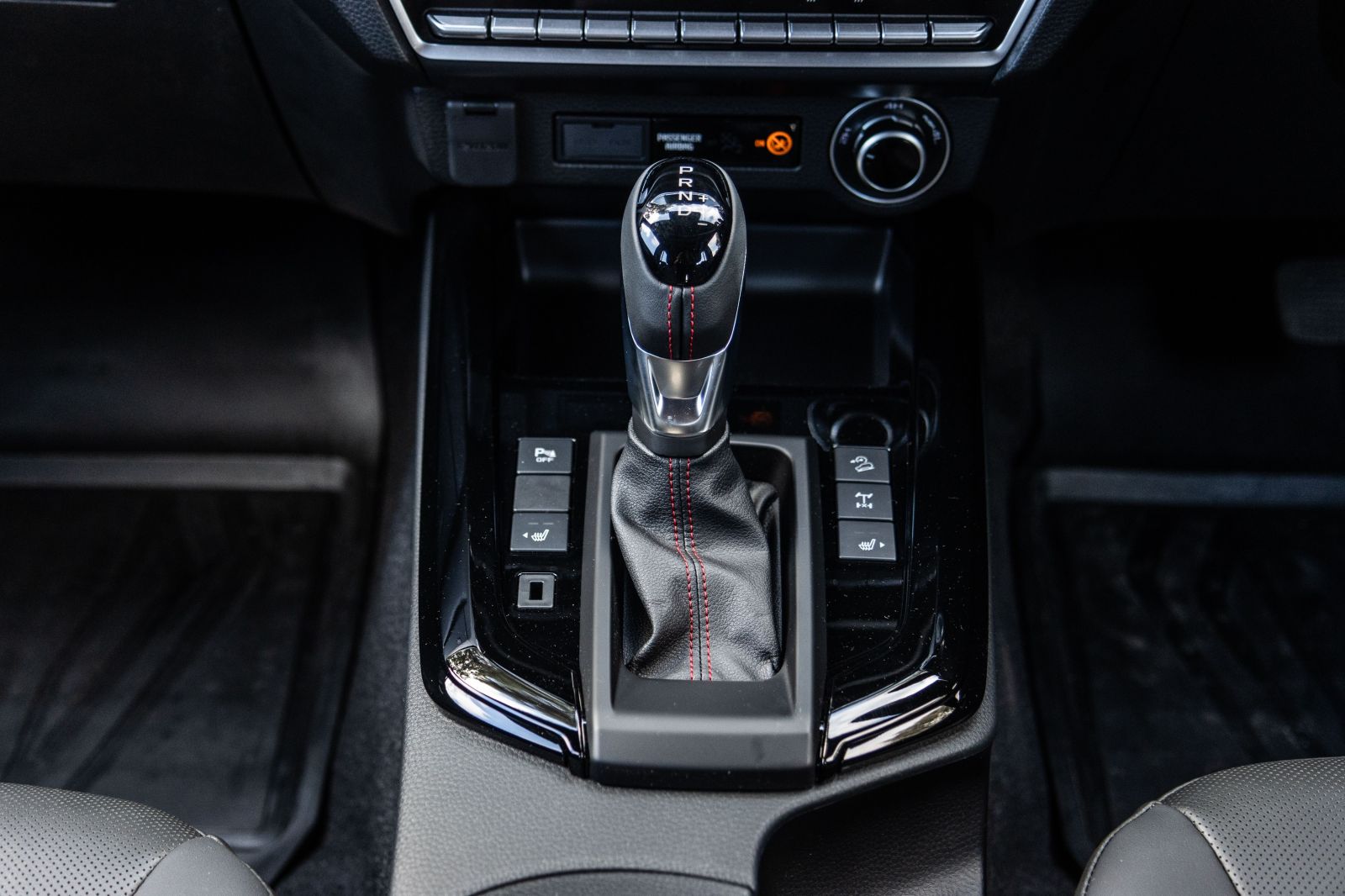
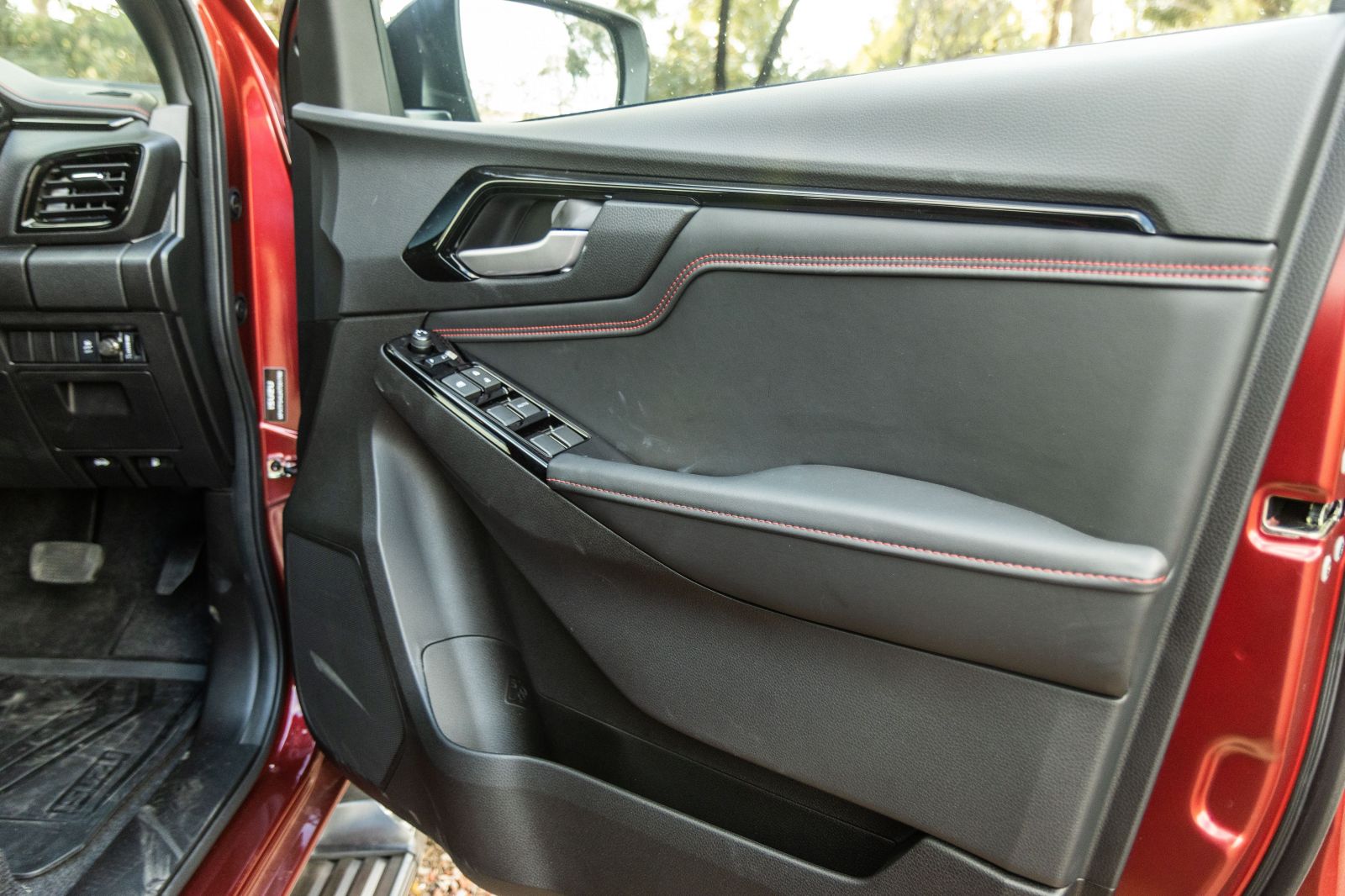
View 6 images
The Isuzu D-Max was tested by ANCAP in 2020 and earned a five-star rating.
That rating was based on an adult occupant protection score of 83 per cent, a child occupant protection score of 89 per cent and a safety assist score of 81 per cent. Vulnerable road user protection testing yielded a score of 69 per cent.
Every model comes standard with the following safety features:
Automatic models also add wrong-pedal acceleration warning, adaptive cruise, and lane-keep assist.
Eight airbags are standard, including a central airbag designed to stop the passenger and driver’s flailing arms and heads crashing into each other in a serious side-impact crash.
Combined fuel economy of the 3.0-litre D-Max ranges between 7.7L and 8.0L/100km depending on the variant, while the 1.9-litre uses between 6.7L and 7.0L/100km.
It has a 76L fuel tank across the entire D-Max range.
What are the running and servicing costs of a Isuzu D-Max?
The 2024 Isuzu D-Max covered by a six-year, 150,000km warranty. When you service on schedule at an Isuzu dealer, up to seven years of roadside assistance is offered.
Logbook servicing is required every 12 months or 15,000km, whichever comes first, apart from a complimentary three-month service.
Isuzu D-Max service pricing:
Our expert take on Isuzu D-Max drivability.
For 2024, the mid-spec LS-M Crew Cab Ute, as well as the X-Rider, have also received a softer and more compliant three-leaf standard-duty rear suspension setup. The LS-M Crew Cab Chassis still sticks with the three-leaf heavy-duty rear suspension setup however.
Another major feature D-Max 4×4 models pick up for 2024 is Rough Terrain Mode, which is an electronic off-road traction control aid that first debuted in the current-gen MU-X in 2021.
Unlike the system in the MU-X, however, the D-Max’s Rough Terrain Mode is able to work with the rear differential locked, maximising traction.
Other tweaks the 2024 Isuzu D-Max range has received includes revised tyre pressure monitoring (LS-U and up), new ‘Gen4’ stereo camera, adaptive cruise control with stop and go across the entire range, updated lane-keep assist, welcome headlight and welcome light functions, as well as a revised reversing camera that’s now fitted to cab-chassis models and has a wider field of view.
The rear cross-traffic alert system has been replaced by a more sophisticated rear cross-traffic assist feature, which will apply the brakes if it detects you’re about to have a collision while reversing.
The 2024 Isuzu D-Max is offered with a choice of two turbo-diesel four-cylinder engines: a 1.9-litre with 110kW of power and 350Nm of torque, and a 3.0-litre with 140kW and 450Nm.
Both are mated with a six-speed manual or six-speed automatic transmission with drive sent either to the rear wheels only or through a part-time four-wheel drive system with a two-speed transfer case.
The latter offers switchable 2H, 4H and 4L options plus a standard locking rear differential.
For 2024, 4×4 models also gain Rough Terrain Mode which first debuted in the current-gen MU-X but in the D-Max can be operated in tandem with the rear diff lock.
With the 3.0-litre four-cylinder turbo-diesel engine, the D-Max is torquey and tractable. It pairs wonderfully with the six-speed auto, which ably keeps it in its torque band and shifts smoothly.
There’s also a lack of turbo lag, while peak torque comes on tap at just 1600rpm and sticks around until 2600rpm.
There’s the typically gruff diesel ute soundtrack under acceleration, but at cruising speeds it’s pleasant. Wind and road noise are kept largely in check, even at highway speeds.
The electrically-assisted steering is pleasantly light and car-like without feeling vague. It’s a boon in tighter urban confines, and the D-Max feels more manoeuvrable than rivals with hydraulic set-ups. The steering also feels secure even as speeds increase.
The D-Max’s ride quality is among the best in the segment, with the usual ladder-frame ute jiggles kept to a minimum even with an empty tub. Those jiggles are further quelled when you put even a small load back there.
At high speeds on unsealed roads, the D-Max has a comfortable, sure-footed ride, even with an empty tub.
The blind-spot monitoring works well and is absolutely welcome, particularly in a segment where this feature remains rare.
The lane-keep assist isn’t too obtrusive, while the adaptive cruise control also performs admirably. You can also adjust the sensitivity of some of these systems, including the forward collision warning.
What’s most impressive about the D-Max is that the steering, ride quality and noise levels don’t get noticeably worse as your speeds get higher, meaning this is a comfortable highway cruiser.
Overall, the capable powertrain, light steering and mostly well-behaved ride makes this one of the better utes to drive.
What colours are available for the Isuzu D-Max
A new Sunshine Orange mica exterior paint colour is offered exclusively on the X-Terrain following the discontinuation of Volcanic Amber metallic.
The 2024 D-Max range will be offered in nine colours. All except Mineral White come at a $500 premium.
The D-Max is backed by a six-year, 150,000km warranty, and comes with seven years of roadside assist.
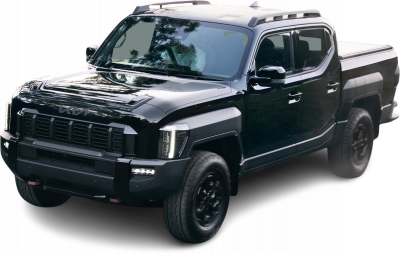
Tasman
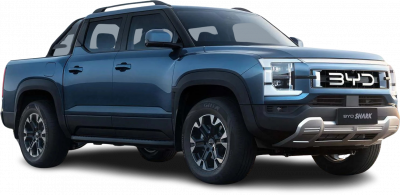
Shark 6
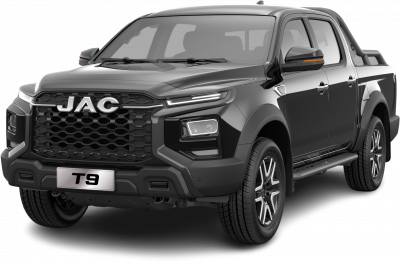
T9
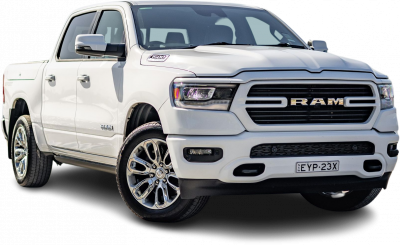
1500
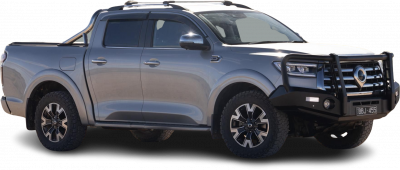
Cannon
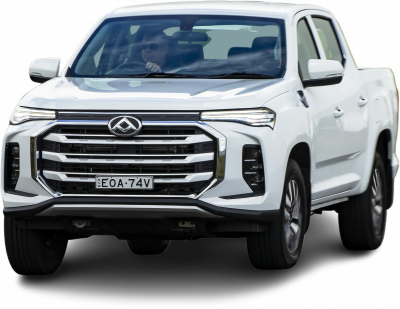
T60
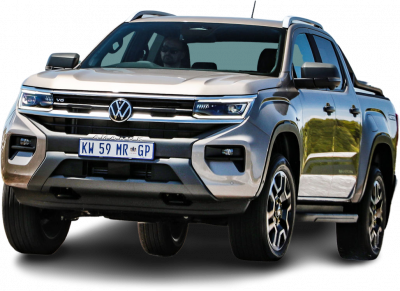
Amarok
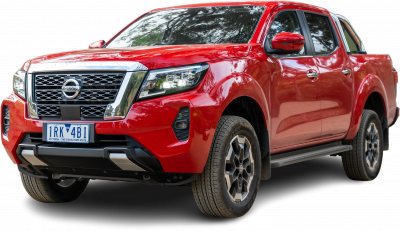
Navara
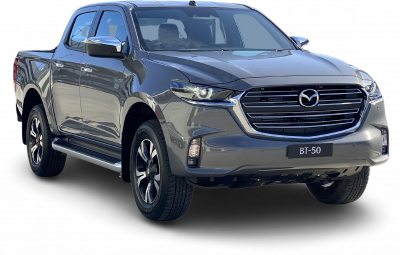
BT-50
Can’t see the car you’re considering?
Is this the right car for you? Out experts buy or not guide.
The D-Max remains one of the best workhorses in its class, and deserves its newfound popularity across the market, even if those price hikes strike me as cheeky at best.
That said, once there are plenty of V6 diesel, full-time-AWD-toting Rangers hitting the road this year with their oversized portrait touchscreens, the D-Max might feel in need of a larger-scale facelift before long.
Where expert car reviews meet expert car buying – CarExpert gives you trusted advice, personalised service and real savings on your next new car.
The cheapest Isuzu D-Max is the SX that starts from $32,200.
The most expensive Isuzu D-Max is the Blade that starts from $78,900.
The best towing capacity of a Isuzu D-Max is 3500 kg offered by the following variants: SX, LS-U, LS-M, X-RIDER, LS-U+, X-TERRAIN and Blade.
The largest Isuzu D-Max is the Blade which measures 1910mm wide, 5308mm in length and sits 1810mm tall.
The most powerful Isuzu D-Max is the Blade which has 140kW of power from its 3.0L TURBO DIESEL COMMON RAIL engine.
The Isuzu D-Max is built in Thailand and shipped to Australia.
The heaviest Isuzu D-Max is the Blade which weighs 3100 kg (kerb weight).
The Isuzu D-Max uses diesel.